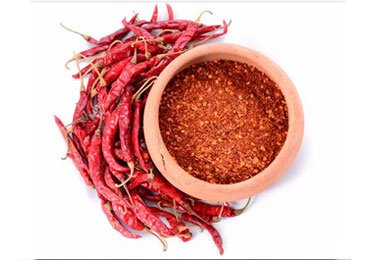Cardamom (Elaichi) 8.5+mm 1Kg Special Offer
Cardamom contains vitamin C, niacin, magnesium, and potassium. Apart from its distinctive flavour, cardamom contains high levels of antioxidants, and it is used in Ayurvedic medicine to treat urinary tract disorders and to lower blood sugar levels. It is also frequently incorporated as an ingredient in homeopathic toothpaste for its antibacterial and breath-freshening qualities.
Cardamom (Elaichi) 8+ 1Kg Special Offer
Cardamom contains vitamin C, niacin, magnesium, and potassium. Apart from its distinctive flavour, cardamom contains high levels of antioxidants, and it is used in Ayurvedic medicine to treat urinary tract disorders and to lower blood sugar levels. It is also frequently incorporated as an ingredient in homeopathic toothpaste for its antibacterial and breath-freshening qualities.
Cardamom (Elaichi) 8mm1 Kg Special Offer
Cardamom contains vitamin C, niacin, magnesium, and potassium. Apart from its distinctive flavour, cardamom contains high levels of antioxidants, and it is used in Ayurvedic medicine to treat urinary tract disorders and to lower blood sugar levels. It is also frequently incorporated as an ingredient in homeopathic toothpaste for its antibacterial and breath-freshening qualities.
Cardamom (Elaichi) 7.5 To 8 1Kg Special Offer
Cardamom contains vitamin C, niacin, magnesium, and potassium. Apart from its distinctive flavour, cardamom contains high levels of antioxidants, and it is used in Ayurvedic medicine to treat urinary tract disorders and to lower blood sugar levels. It is also frequently incorporated as an ingredient in homeopathic toothpaste for its antibacterial and breath-freshening qualities.
Cardamom(Elaichi) 7 To 8 1Kg Special Offer
Cardamom contains vitamin C, niacin, magnesium, and potassium. Apart from its distinctive flavour, cardamom contains high levels of antioxidants, and it is used in Ayurvedic medicine to treat urinary tract disorders and to lower blood sugar levels. It is also frequently incorporated as an ingredient in homeopathic toothpaste for its antibacterial and breath-freshening qualities.
Cardamom 7 To 7.5 1Kg Special Offer
Authentic Indian cardamom seeds, directly from Idukki, Kerala. The robust flavours of Cardamoms are packed in their seeds. They have an earthy, bittersweet aroma. They are mainly used in Indian, Middle Eastern, Arabic and Swedish cuisines.
Cardamom 7 To 7.5 1Kg Special Offer
Black pepper is a flowering vine in the family Piperaceae, cultivated for its fruit, known as a peppercorn, which is usually dried and used as a spice and seasoning. The fruit is a drupe which is about 5 mm in diameter, dark red, and contains a stone which encloses a single pepper seed.
White Pepper 1Kg Special Offer
White pepper has a less pungent heat due to the chemicals that are stripped away when the skin is removed. At the same time, allowing the berries to fully ripen and ferment results in white pepper's more complex, earthy flavor. White and black pepper can be purchased in two forms: whole peppercorns or ground.
Cloves 1Kg Special Offer
Cloves are the aromatic flower buds of a tree in the family Myrtaceae, Syzygium aromaticum. They are native to the Maluku Islands (or Moluccas) in Indonesia, and are commonly used as a spice, flavoring or fragrance in consumer products, such as toothpaste, soaps, or cosmetics.
Nutmeg (Jathi) 1Kg Special Offer
Nutmeg is the seed or ground spice of several species of the genus Myristica. Myristica fragrans is a dark-leaved evergreen tree cultivated for two spices derived from its fruit: nutmeg, from its seed, and mace, from the seed covering.
Nutmeg Mace (Jathi Pathri) 1Kg Special Offer
Nutmeg is the seed or ground spice of several species of the genus Myristica. Myristica fragrans is a dark-leaved evergreen tree cultivated for two spices derived from its fruit: nutmeg, from its seed, and mace, from the seed covering.
Star Anise (Chakri Phool) 1Kg Special Offer
It has anti-fungal, antibacterial and anti-inflammatory properties and may fight stomach ulcers, keep blood sugar levels in check and reduce symptoms of depression and menopause.
Cinnamon (Dalchini Sticks) 1Kg Special Offer
Cinnamon is a spice obtained from the inner bark of several tree species from the genus Cinnamomum. Cinnamon is used mainly as an aromatic condiment and flavouring additive in a wide variety of cuisines, sweet and savoury dishes, breakfast cereals, snack foods, teas, and traditional foods.
Tamarind (Puli) 1Kg Special Offer
Tamarind is a leguminous tree bearing edible fruit that is probably indigenous to tropical Africa. The genus Tamarindus is monotypic, meaning that it contains only this species.
Cambogia (Kudampuli) 1Kg Special Offer
Garcinia gummi-gutta is a tropical species of Garcinia native to South Asia and Southeast Asia. Common names include Garcinia cambogia, as well as brindle berry, and Malabar tamarind. The fruit looks like a small pumpkin and is green to pale yellow in color.
Turmeric Stick 1Kg Special Offer
People commonly use turmeric for osteoarthritis. It is also used for hay fever, depression, high cholesterol, a type of liver disease, and itching, but there is no good scientific evidence to support most of these uses.
























